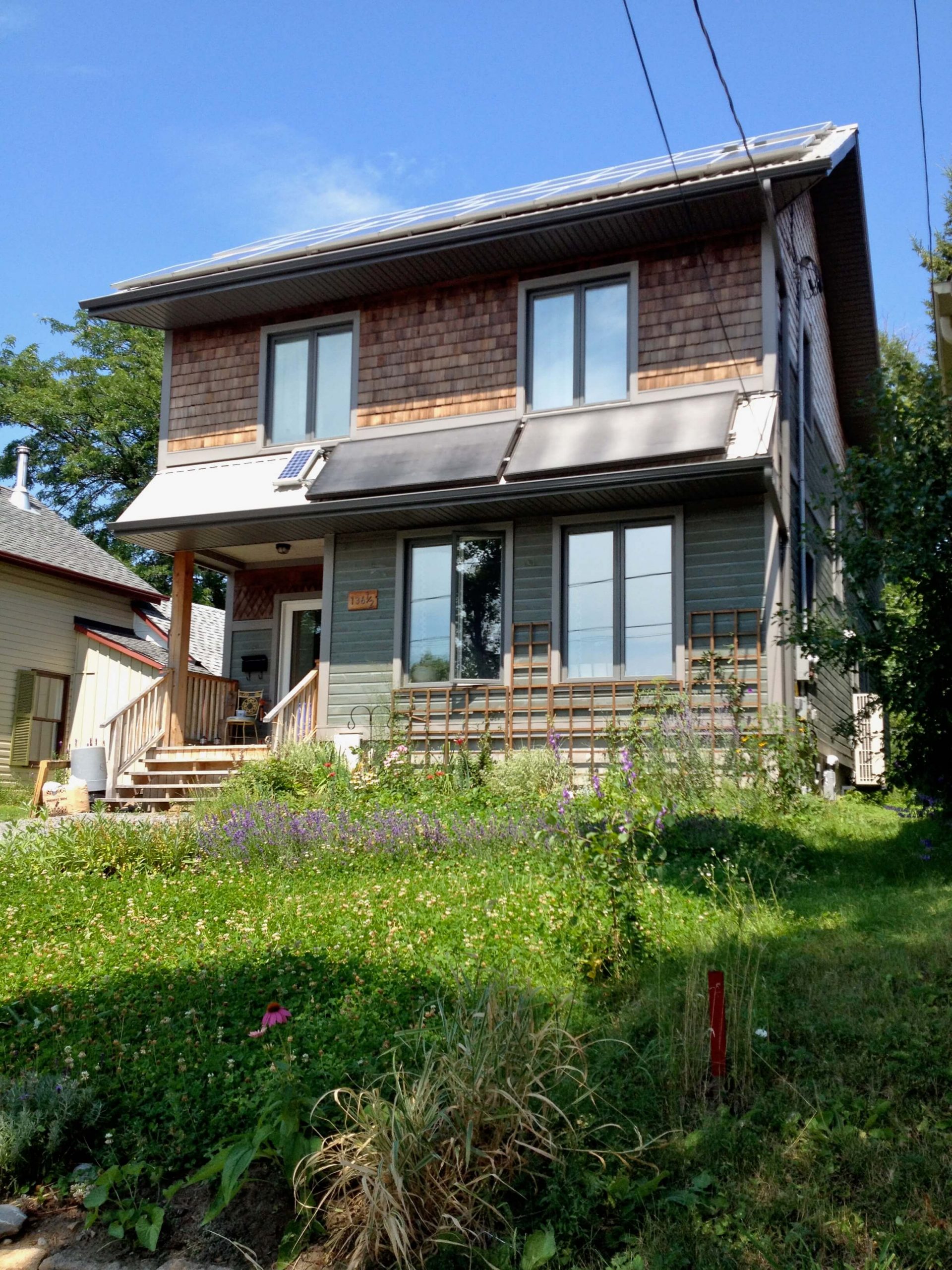Choosing high quality windows is a very important part of our strategy to make Canada’s Greenest Home as energy efficient as possible. There is a lot to consider when making a window purchase… here is how we went about making our decision to buy Inline windows.

The triple pane, fibreglass windows from Inline have excellent thermal properties, are good looking and well made.
First thing to consider is the material that the frame of the window is made from. Choices include wood, vinyl, aluminum and fibreglass. We chose fibreglass frames for several reasons. They are long lasting, don’t expand and contract as much as other materials, don’t offgas and have good thermal resistance. Vinyl windows weren’t even a consideration, as the PVC is a red-list material for the Living Building Challenge. The offgassing of vinyl windows has been pointed out in several studies, and the material expands and contracts considerably as temperatures change, which can strain and eventually ruin the seals in the glazing. Plus, the manufacturing of PVC is a very toxic practice and people who work must be certified, take at look at ISO 9001 cost. There are some very good wooden windows made from FSC certified wood, which perform as well as fibreglass windows. However, there is more maintenance to ensuring wood windows have a long lifespan that is not required with fibreglass frames.
Next up to consider is the glazing (glass) portion of the window. We chose triple glazing, meaning that there are three panes of glass, with two cavities separating the panes. This adds a considerable amount of extra thermal resistance compared to typical double glazed windows.
The US Department of Energy (DOE) defines high-performance glazing as having a heat transfer coefficient (U-value) around 0.2 (R-5). Our Inline Windows have a U-value of 0.17 (R-6). By comparison, ENERGY STAR windows must achieve a U-value of 0.28 or better (R-3.6). High-performance glazing also often includes spectrally selective coatings, which filter out from 40% to 70% of the heat normally transmitted through clear glass while allowing the full amount of light to be transmitted. We chose windows with different coatings on the glass for different sides of the house. On the south side, we wanted the highest solar heat gain co-efficient (SHG), while on the west we wanted to block out the sun to prevent overheating and on the north we wanted the best possible heat retention. Inline was able to provide windows for each of these scenarios.
Most windows are now manufactured to have an inert gas (usually argon) between the panes of glass to further reduce heat transmission between panes.
There is a lot of good, useful information provided by window companies right on the window (and usually in catalogues and websites). This should include the whole window U-value, solar heat gain coefficient (SHGC), visible transmission figures plus any certifications the window has earned (Energy Star, etc.).

This window has a low solar heat gain coefficient (SHGC) because it’s on the north side of the house. It has reflective coatings (low emmissivity or Low-E) that reflect heat back into the house.
A couple last issues factored into our window choice. Inline uses an insulated spacer between the panes of glass, as opposed to many companies that use metal spacers which conduct a lot of heat across the edge of the entire glazed surface. Inline also makes “thermally broken” frames, which means that the frame is not continuous from the inside of the window to the outside, further improving whole window thermal performance.
We also chose casement and awning windows because they can achieve much tighter seals than horizontal or vertical sliders.
Finally, Inline offers a wide range of styles and we were able to pick a frame colour and trim shape that worked with our aesthetics and our siding choices.
It is worth doing lots of research before purchasing windows. This is one area where you usually get what you pay for… and where quality and performance make a big difference in the energy efficiency of the building.
There is good information about making window purchasing decisions at Natural Resources Canada.

